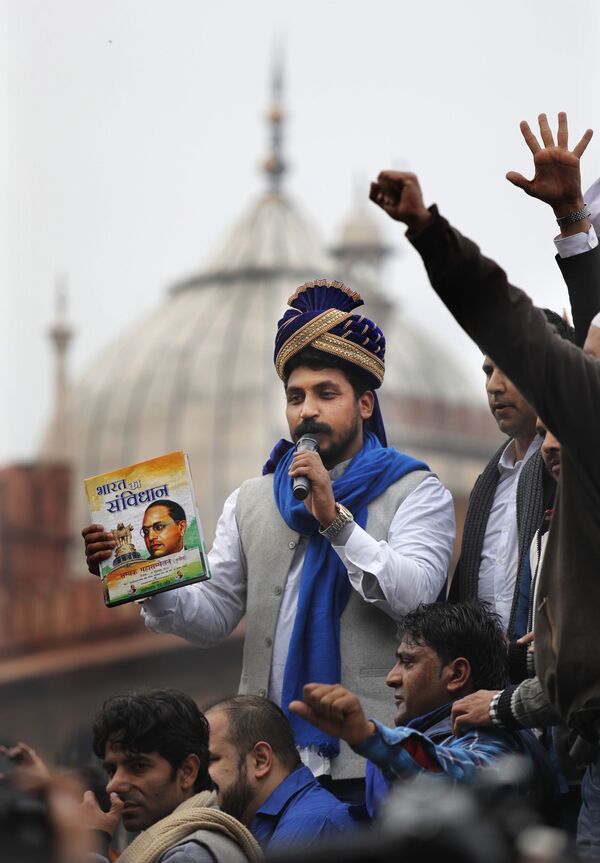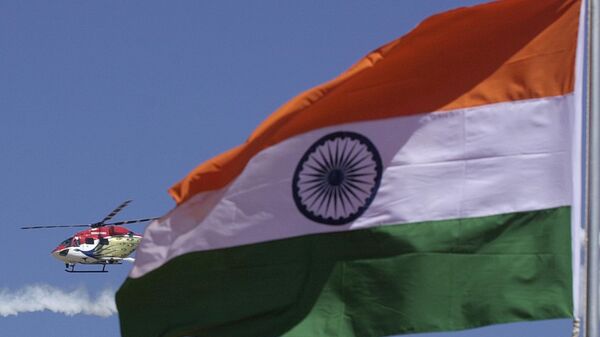A Dalit (lower caste) boy was lynched to death for an affair with an upper caste girl by her family members in the southern metropolitan city of Pune on 7 June. This was one of over 4,200 monthly reported atrocities against Dalits and Tribals in the country. In India, the caste system is a traditional form of rigid social stratification into groups divided by descent and occupation.
Divided in four castes, Brahmins are priests or gurus, Kshatriyas are warriors, kings, administrators, etc. - the two making for the upper castes, Vaishyas are agriculturalists and traders, and Shudras are servants, the oppressed and low castes.
The ancient system continues to justify inhumane treatment and discrimination against 165 million Indians on the basis of caste. In constitutional terms, to abolish the caste system, lower castes are known as Dalits and Tribals.
From untouchability in ancient times, which is close to the former apartheid of South Africa, those in the lower strata of the caste hierarchy are subjected to violence and torture, resulting in deaths, for menial acts like entering into temples, drinking water from the same source that is used by upper castes, celebrating marriages in residential areas of upper castes. Dalit boys are killed for an affair with an upper caste girl, while Dalit girls are raped and tortured for rejecting sexual advances from upper caste men.
Widespread lynching has become a popular phenomenon, especially by cow vigilantes, after Dalits are found skinning dead animals, a task they have been assigned as per the traditional system. In spite of a ban on manual scavenging, Dalits die every year as they work in hazardous conditions. In the latest crime data presented by the National Crime Records, atrocities against Dalits and Tribals (termed as oppressed) rose from 47,369 in 2016 to 50,325 in 2017, and over 25% in a decade.

Despite the rising number of cases on a yearly basis, a major blow to the community — leading to massive protests in Rajasthan, Uttar Pradesh, Bihar, Gujarat, Odisha, Punjab, and Madhya Pradesh, resulting in the death of 11 persons — came from the 2018 Supreme Court judgment expressing concern over the misuse of the Scheduled Castes and Tribes (Prevention of Atrocities) Act, 1989.
The court ruled that there shall be no immediate arrest of a citizen or public servant without prior permissions for crimes registered under the act — a sharp turn from the decades-old precedent which was considered as a major tool to curb the atrocities against the oppressed. The court went ahead and even introduced the provision of anticipatory bail if the complaint was found to be mala fide.
Acknowledging that in recent years there has been a rise in the number of atrocities and there hasn’t been an outcry about it, political scientist Sudha Pai reasons it to be the presence of a right-wing party like the BJP. “So it’s difficult for Dalits to start a movement, protest and so on. From that point of view, the rise of an upper-caste Hindu party has made it very difficult for Dalits”, she says.
Tracing the Legacy
Historic Dalit leaders from Jyotibha Phule, Dr B.R. Ambedkar and Periyar began movements for the uplifting of Dalits in their times, but this never led to a pan-India revolution. Pai says that with some education post-independence, Dalits became a little empowered to fight for reservation in the 1990s. But the question remains if it can be seen as an anti-caste movement.
In the political scenario, India witnessed the emergence of the Bahujan Samaj Party, a party for the lower castes, with its base in the largest Indian state of Uttar Pradesh, where the party's President Mayawati became the face for the uplifting of the lower castes.
Pai feels that the BSP fulfilled its agenda, resulting in self-respect, talk about social justice and a lot achievement for Dalits as compared to the 1980s, but the absence of a proper economic agenda for the material advancement of Dalits hinders their uplifting.
The 2011 census shows an increase in literacy rates among Dalits at 60-66%, which is still lower than the average of the rest of the Indian population.
She says: “The result is that Dalits do not have the potential in their hands to revolt on a very, very large scale. Material condition of the Dalits is also a reason they constitute some of the poorest population of the country, so their potential to revolt is not high”.
In 2016, the suicide of Dalit student Rohith Vemula created uproar in student politics against the caste oppression in academic circles, mobilising the youth across the country, but soon the movement died in silence.

With the emergence of political leaders like Chandra Shekhar Azad and Jignesh Mavani, there are again hopes of a pan-India anti-caste movement. But Pai believes it is hard to imagine one or two leaders leading the pan-India movement in the current scenario.
Anti-Caste Movement Lacks Support
Drawing parallels between racial discrimination and Dalit oppression, Indian politician and former Member of Parliament Udit Raj says: “Dalits themselves are divided into the sub-castes while Blacks are one community. Among Dalits, they are extremely divided”.
In the US and all other countries, there is a 50% participation of whites against the racial discrimination, but experts agree that while the upper castes rule, they remain negligent towards atrocities against Dalits and are less bothered about them.
Sociologist and journalist Dilip Mandal terms the White participation as a legacy of the US, where the American Civil War was fought against slavery in the Confederation, while the Whites in the North, under the leadership of Abraham Lincoln, fought for the liberation of the Black slaves.
But in India, a majority of the elite upper caste and middle class do not seem to bother; rather, there has been an anti-reservation movement in India for a long time demanding an end to reservation for Dalits in government jobs and higher education institutes.
Mandal claims that Dalits hesitate to revolt due to the religious backing of their oppression. He also says that the lack of upper caste participation stems from the fact that Dalits, or the lower caste, make up 16.6% of the population in India, so the hegemonic structure will be disturbed if they empower Dalits.



